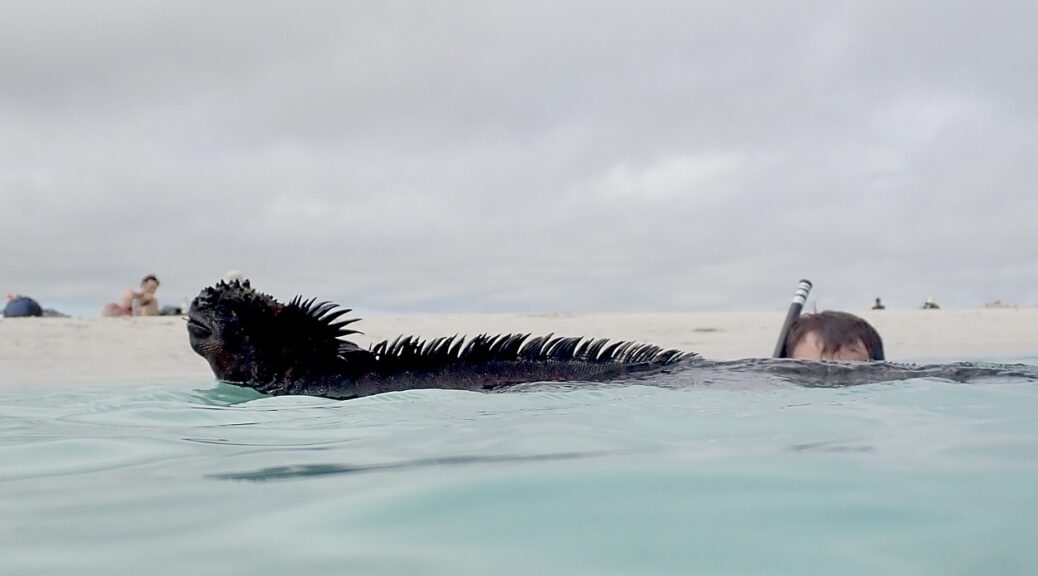
By Karen Rubin, Dave E. Leiberman, Laini Miranda, Eric Leiberman & Sarah Falter
Travel Features Syndicate, goingplacesfarandnear.com
For a place that seems so remote, so exotic, so far from the reaches of the everyday and which affords such a unique opportunity to see rare and endangered animals, the Galapagos is surprisingly easy to reach – not at all like Jules Verne’s “Journey to the Center of the Earth.” All that it takes to have this “once in a lifetime,” “bucket list,” wonder-ful experience, is making the decision to go.
“Nature’s Greatest Laboratory,” the Galapagos is where you see natural selection and evolution unfold before you in real time. The Galapagos is also the poster child for the importance of tourism to provide the economic resources to protect the environment and culture, but also the critical need to rein in tourism and development. In effect, the Galapagos is the model for what responsible, sustainable tourism can mean to preservation, conservation of these precious places.

The Galapagos became a national park (Ecuador’s first) in 1959, the same year that the Charles Darwin Research Station was founded and 100 years after Darwin published his seminal “On the Origin of the Species”- introducing the concepts of natural selection and evolution which he developed as a young naturalist who joined the voyage of the Beagle. The park began operations in 1968. In 1979 UNESCO declared the Galápagos Islands Natural Heritage for Humanity, making the Park Service responsible for park conservation and guarding the islands.
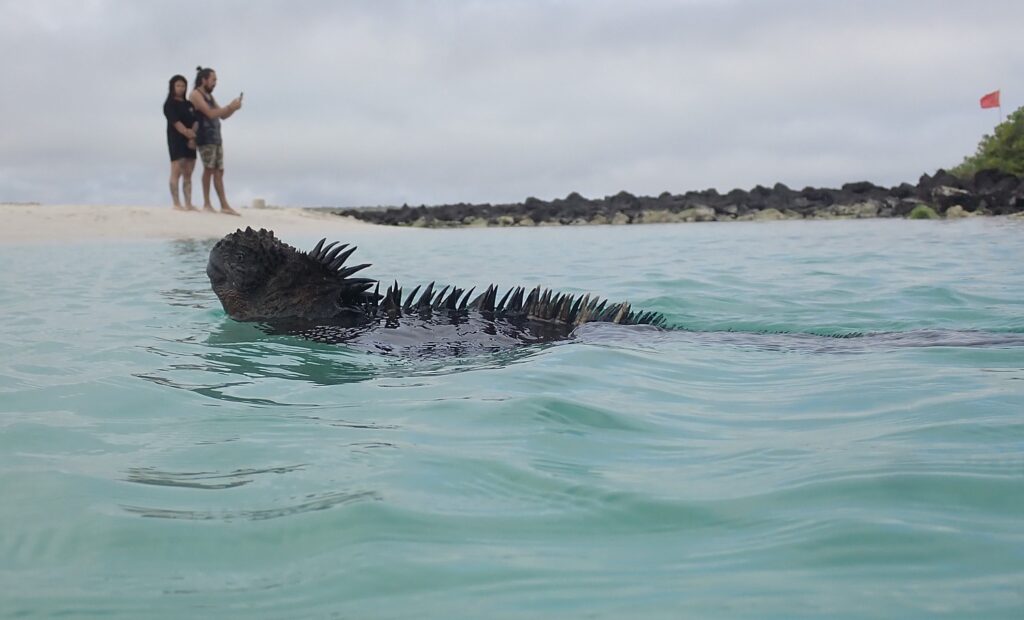
Karen has been writing about the origin of “soft adventure” travel since Lars Eric Lindblad basically invented it and more than anyone else, opened Galapagos to the world in the 1970s. At the same time, Lindblad crusaded for insuring the protection of the Galapagos – lobbying to limit on the numbers of visitors, the size of ships, which are in force today. (His son, Sven Lindblad now continues that legacy with his own company, Lindblad Expeditions, and specially designed expeditionary ships in partnership with National Geographic.)
Finally, we have the opportunity to see the Galapagos and its responsible tourism preservation strategies first hand.
The best way to experience the Galapagos is by ship (you feel a little like Darwin) and we book a four-day/three-night cruise on the 100-passenger MV Galapagos Legend, a gorgeous ship that affords all the luxury amenities, which is operated by Go Galapagos (gogalapagos.com).
We cleverly organize our trip to arrive in the Galapagos a couple of days before the cruise, on Santa Cruz, easily accessed from the Baltra International Airport where we will meet up for the cruise.
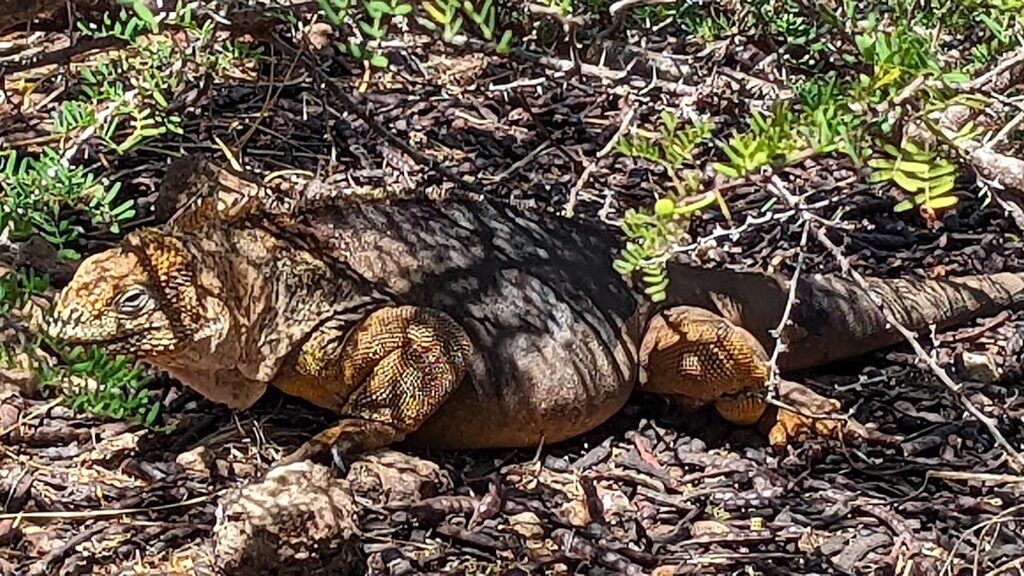
We fly in separately from Quito and Guayaquil into Baltra International Airport on a tiny island that became a US naval base during World War II. Just walking from the plane at Baltra Airport into the terminal, Karen ise met by a “welcoming committee” of a golden iguana (land iguanas were extinct on Baltra by 1954, but thanks to repopulating effort from nearby North Seymour island, they have recovered).
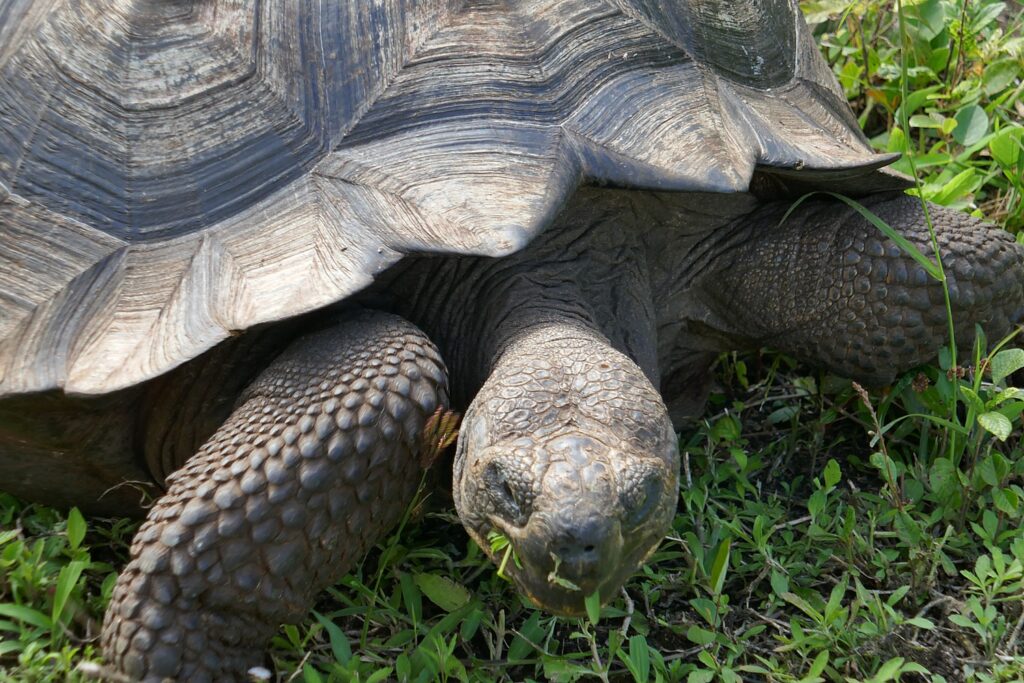
Along with most of the other air travelers, we get on buses to the ferry ($5 fare), and the short ferry ride ($1 fare) to Santa Cruz, one of four inhabited islands, where we have the most splendid introduction to the Galapagos.
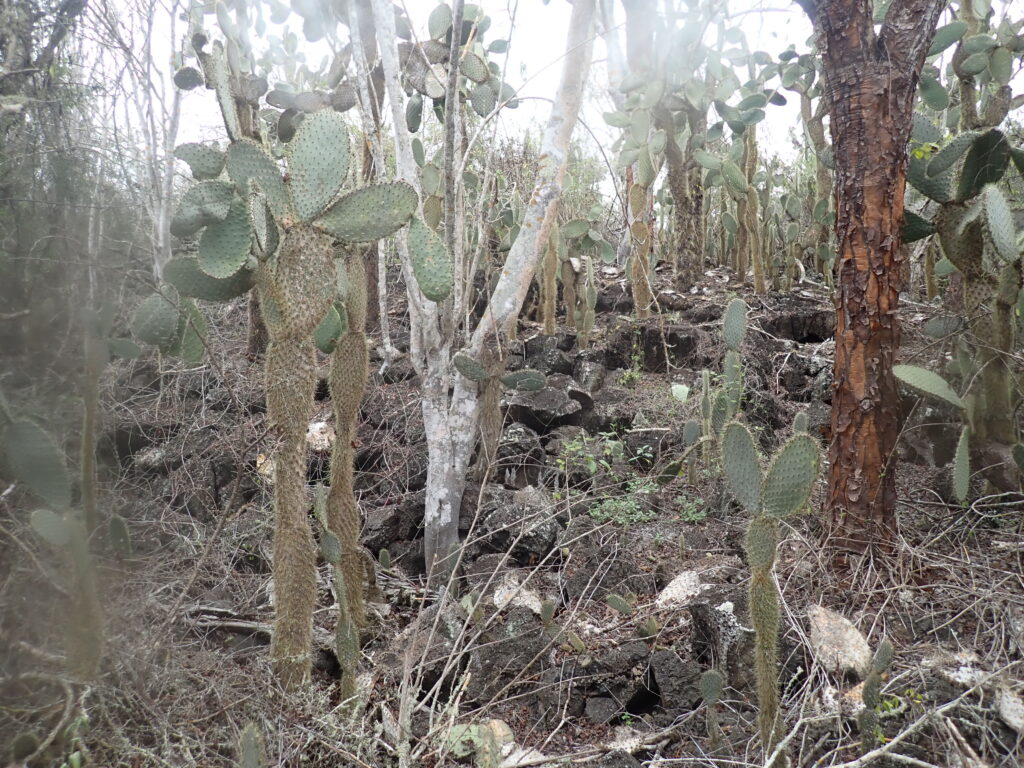
It’s almost an hour’s drive from the ferry to get to Puerto Ayora on the island’s southern tip along the longest paved road in the Galapagos, and you already see the variety of geology and ecosystems which support such diversity of animal life and vegetation. The taxi driver pulls over so Karen can see giant tortoises wandering in a pasture, mixed in with cows.
Ecuador has the highest biodiversity per square kilometer in the world, spread out among a wide variety of environments such as the rainforest to the east and the dry forests to the south. Indeed, within minutes of landing, we already see many of the animals and birds that the Galapagos is famous for.
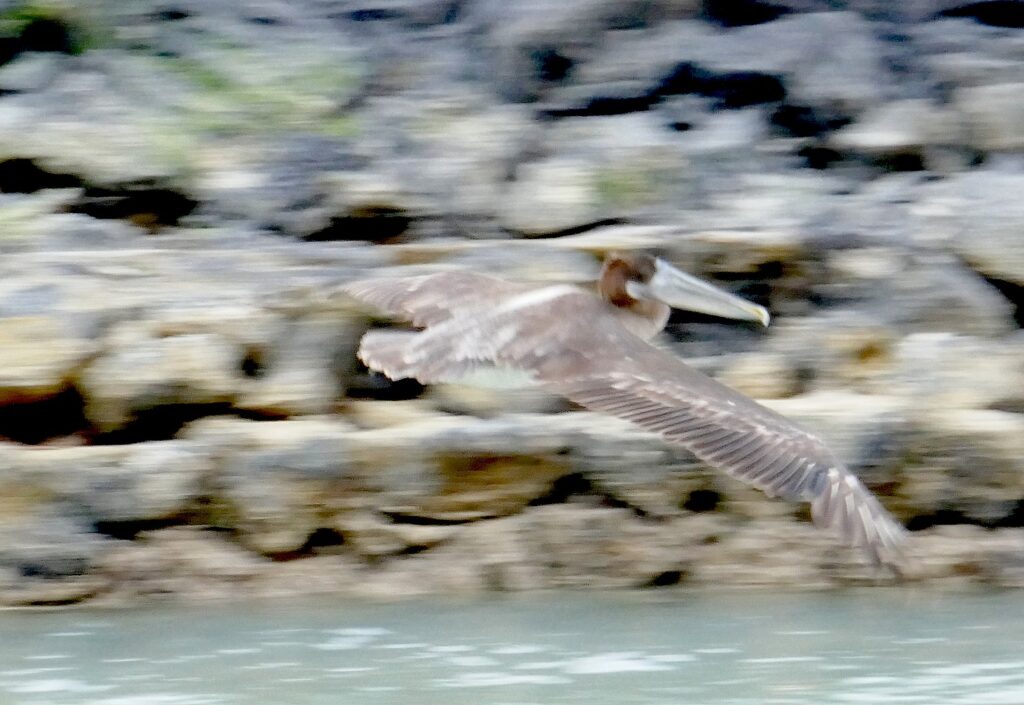
Santa Cruz has a long history of human settlement and agriculture, which has left the landscape permanently altered by invasive species. But the island really developed with World War I and II and settlers from the United States and Europe. Some 12,000 people now live on the island, the second largest of the archipelago. Besides ranches and farms that raise avocados, coffee, sugarcane, bananas, oranges, and lemons, Santa Cruz is the main tourism hub for the Galapagos and in fact, offers a microcosm of what you see throughout.

Karen’s taxi stops at Playa Garrapatero, a long beautiful white powder sand beach with clear waters (and no kiosks so bring your own food!) where David and Laini, Eric and Sarah are already encamped – Eric and Sarah on the last legs of their six-month odyssey. (Imagine, meeting up in the Galapagos!). We arrange with the driver for a taxi to pick us up later (no cell service!). (They have biked here about 15 miles along a hilly route from their AirBnB in Puerto Ayora).
Laini organized a stay in a fantastic AirBnB, Encantadas Guest House, walking distance to everything Puerto Ayora, and steps away from the entrance to the boardwalk that leads to the fabulous beach at Tortuga Bay.
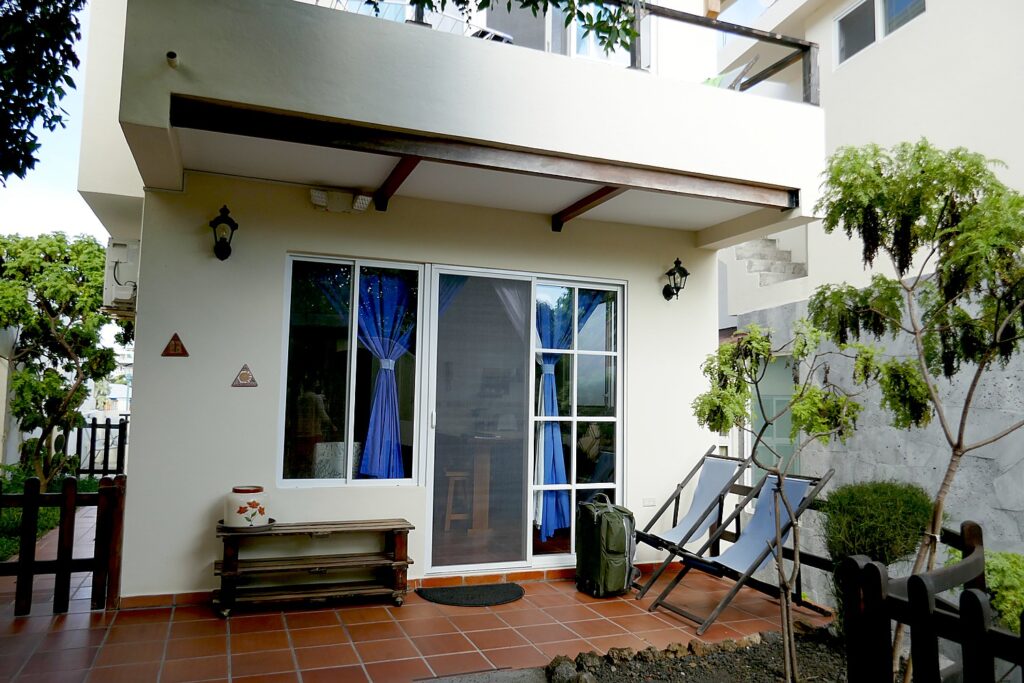
Puerto Ayora is absolutely charming and fun – unbelievably wonderful restaurants and delightful (and tastefully upscale) shops. (Calle Charles Binford is a bustling street of seafood restaurants where you order that day’s catch the length of your arm, some of them still moving, for a $10 complete dinner; elsewhere you can also get a three-course lunch for $5, such as at Laguna Beach, one of our favorite stops; also La Pausa, which Karen insists is the best cerviche ever!).

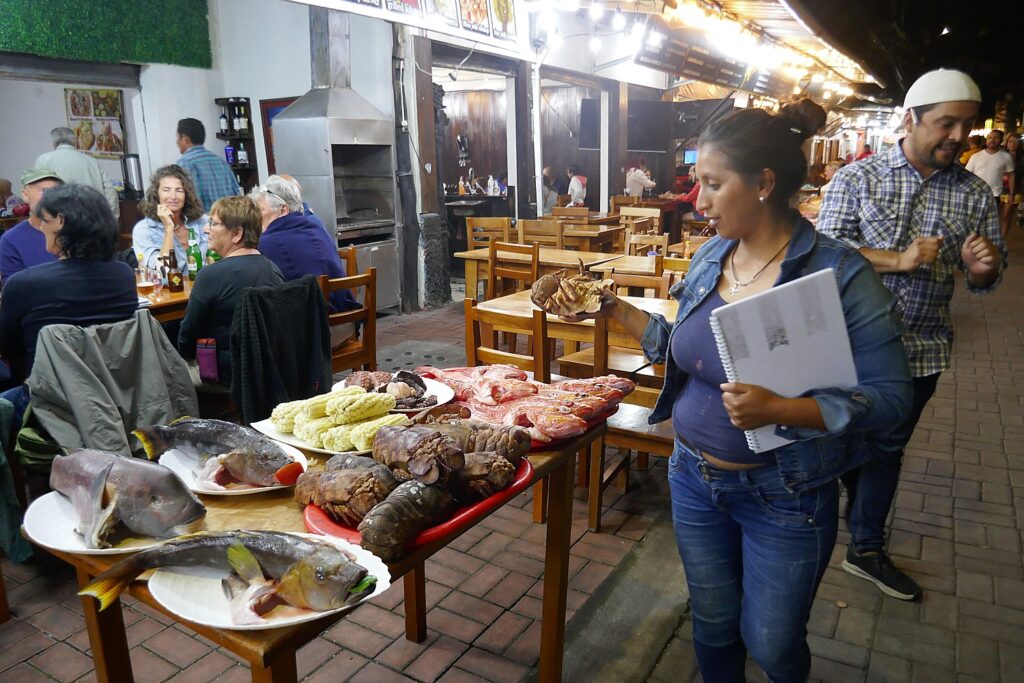
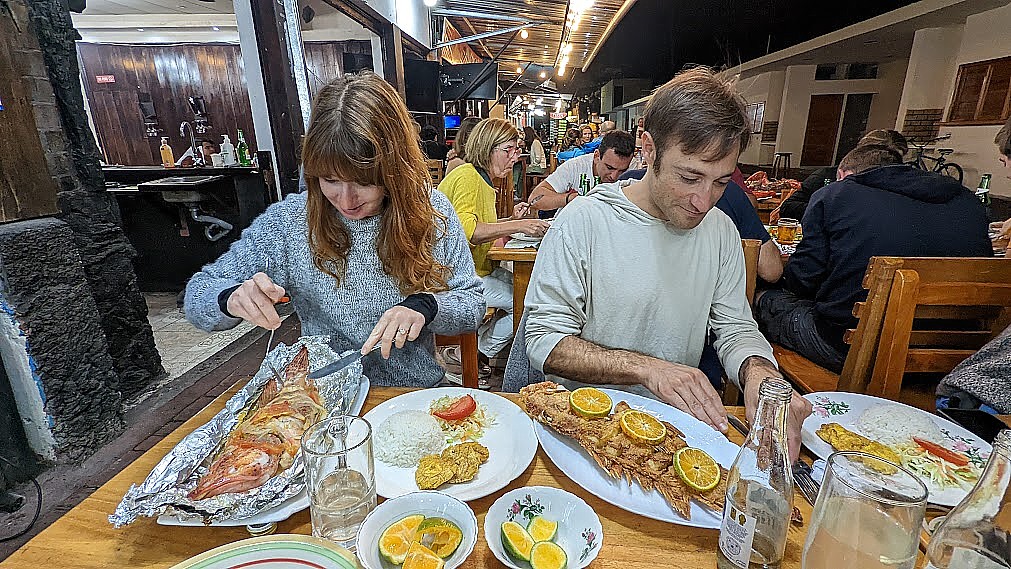

One of the fun places to stop is the fish market on the pier where the fishermen bring in their catches, eagerly awaited by a gaggle of pelicans and a sea lion or two that hang out daily, waiting patiently for their share of scraps.
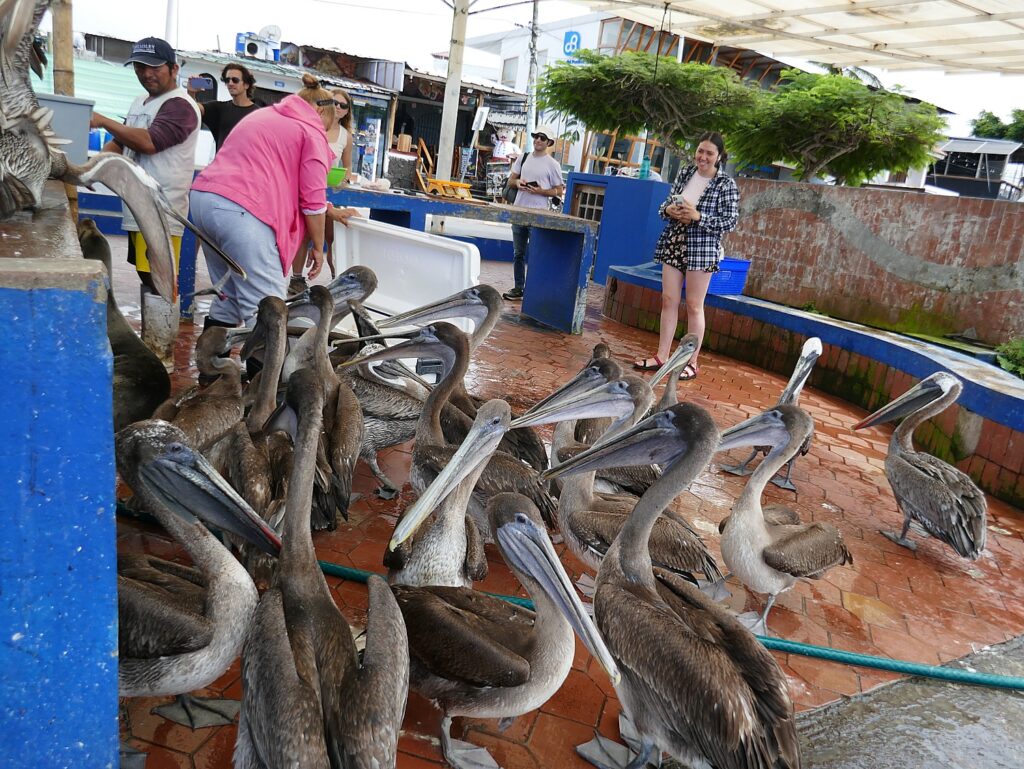

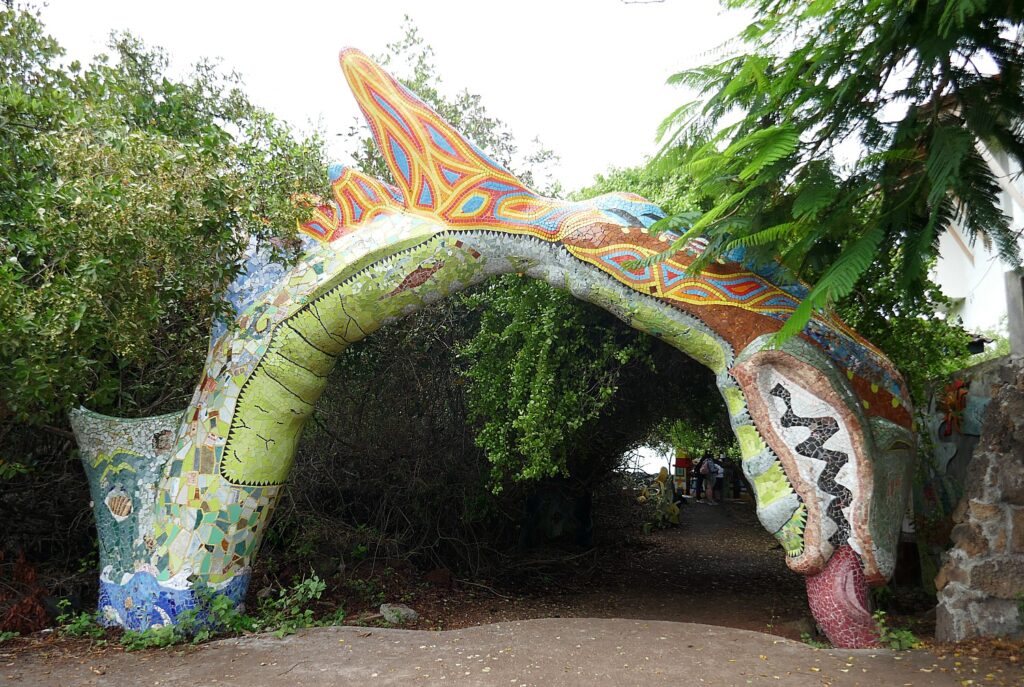
There also are any number of tour companies offering day-trips to the various islands, scuba diving, bike rentals.
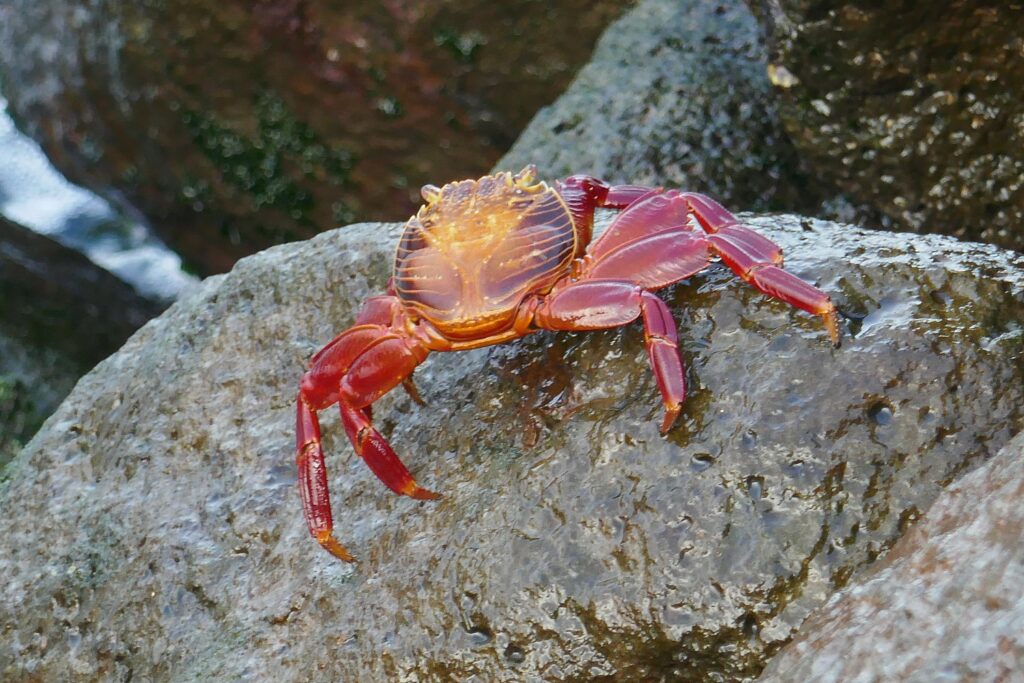
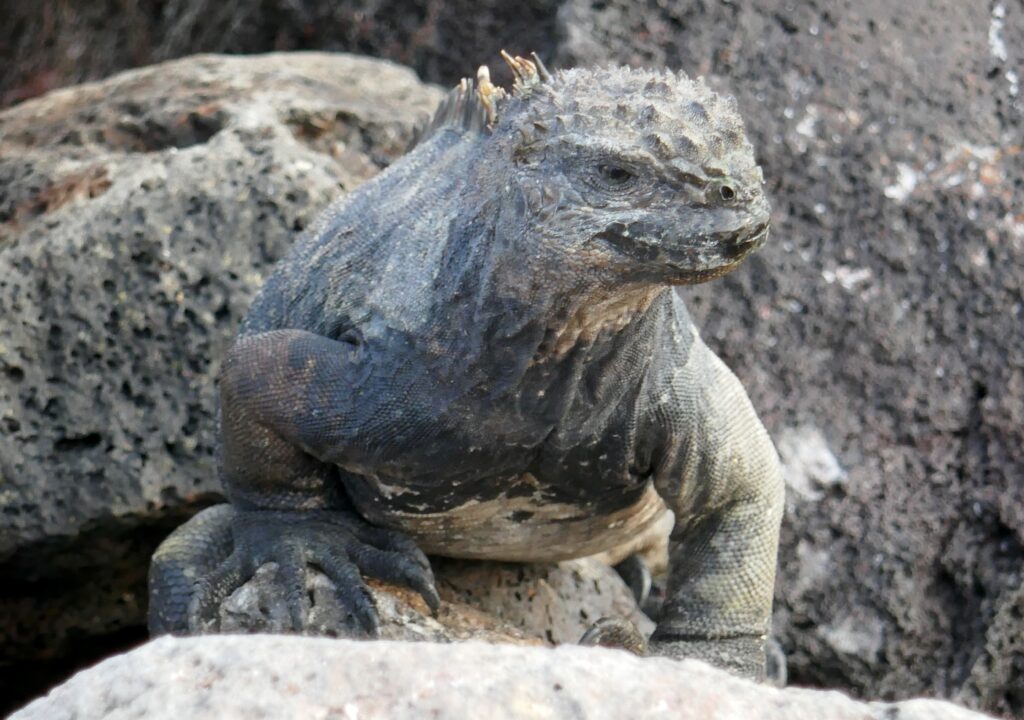

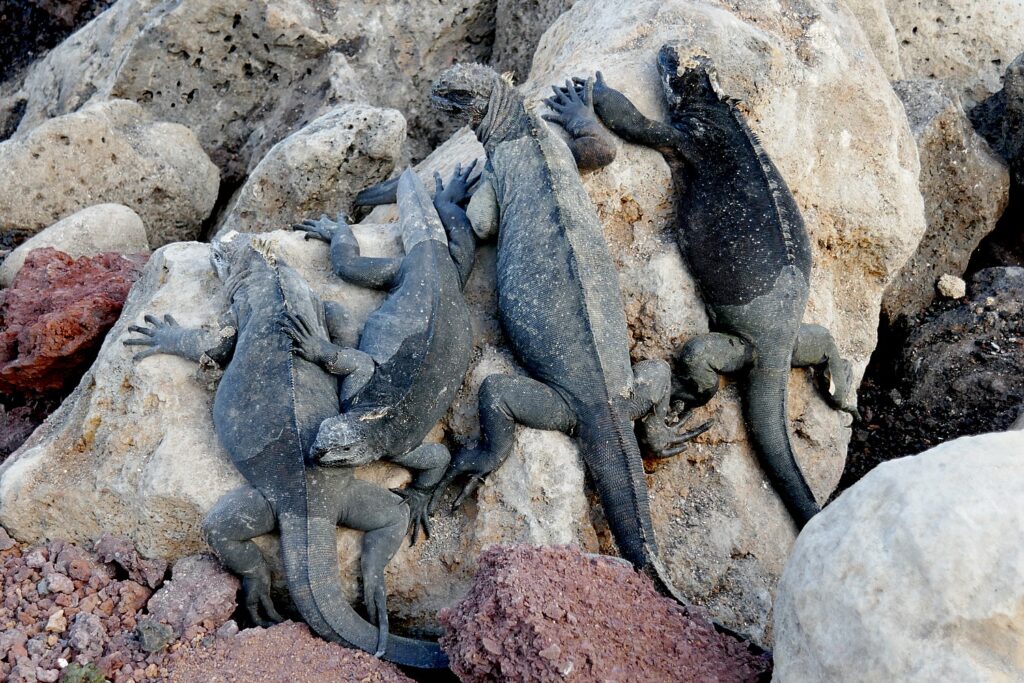
We walk along the rocky shore and are dazzled to see the marine iguanas, red crabs, sea lions and pelicans.
Visiting the Charles Darwin Research Station/Fausto Llerena Tortoise Center is a must to learn about the conservation efforts of the islands’ giant tortoises. Established in 1959, the center has a new guided tour – including infrastructure to support it. The tour is fantastic, introducing you to the concepts – which you can see in real life – of natural selection and evolution which Darwin developed on his five-year voyage (1831-1836) around the world on the Beagle; he studied and documented flora and fauna, particularly noting the specialization of species living in the isolation of the Galapagos islands.
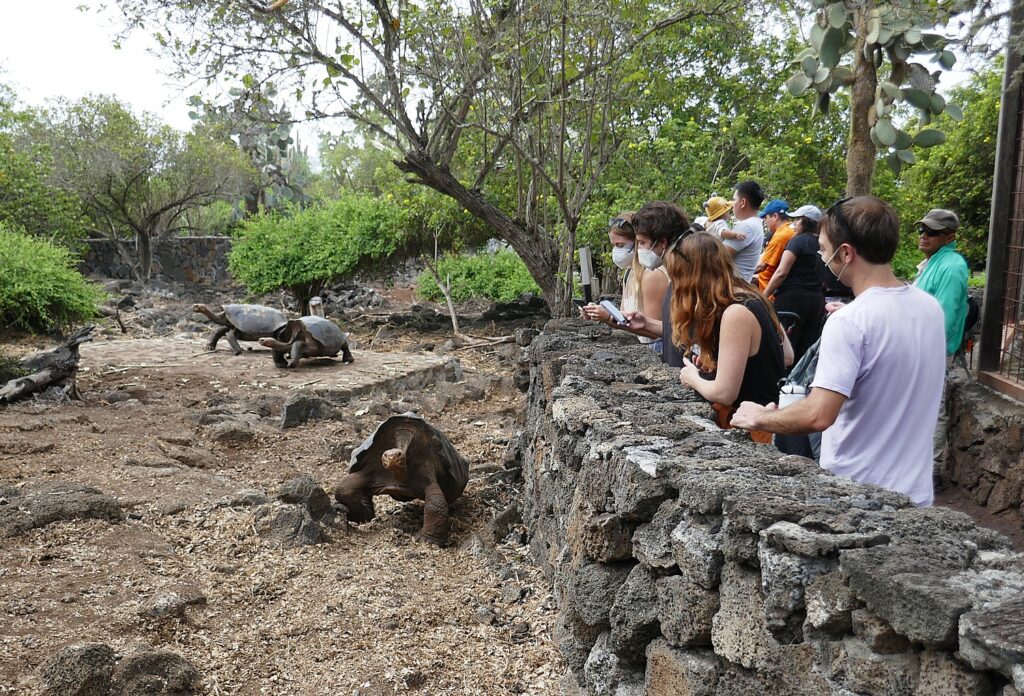
The dramatic climax of the tour comes when you enter a special darkened room to see a mummified Lonesome George, the last of his species, the Pinta tortoise. Lonesome George died in 2012 at the age estimated to be around 100 years old. (Lonesome George was named for comedian George Gobel because of a character the comedian played.) His body was sent to a taxidermist at the Museum of Natural History in New York City to be mummified, and is now both a cautionary tale of extinction and an iconic symbol of the conservation efforts in the Galapagos.
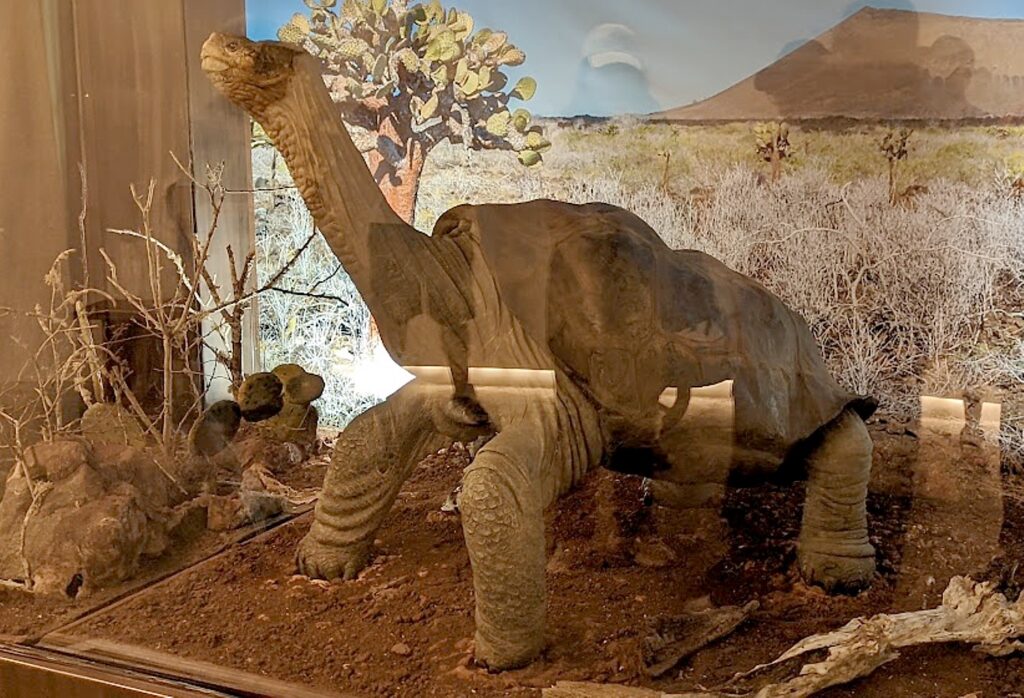
The Fausto Llerena Tortoise Center, a long-term program run jointly by the Galapagos National Park Directorate and the Charles Darwin Foundation, began in 1965 to save the giant tortoise population on Pinzón. It was quickly expanded to include other populations, in particular that of Española where only 14 individuals remained. As of 2008, more than 4,000 young tortoises from eight different populations have been repatriated to their native island, with nearly 1,500 going back to Española. At the Tortoise Center, we observe a variety of tortoises, including hatchlings, juveniles and full-grown individuals.
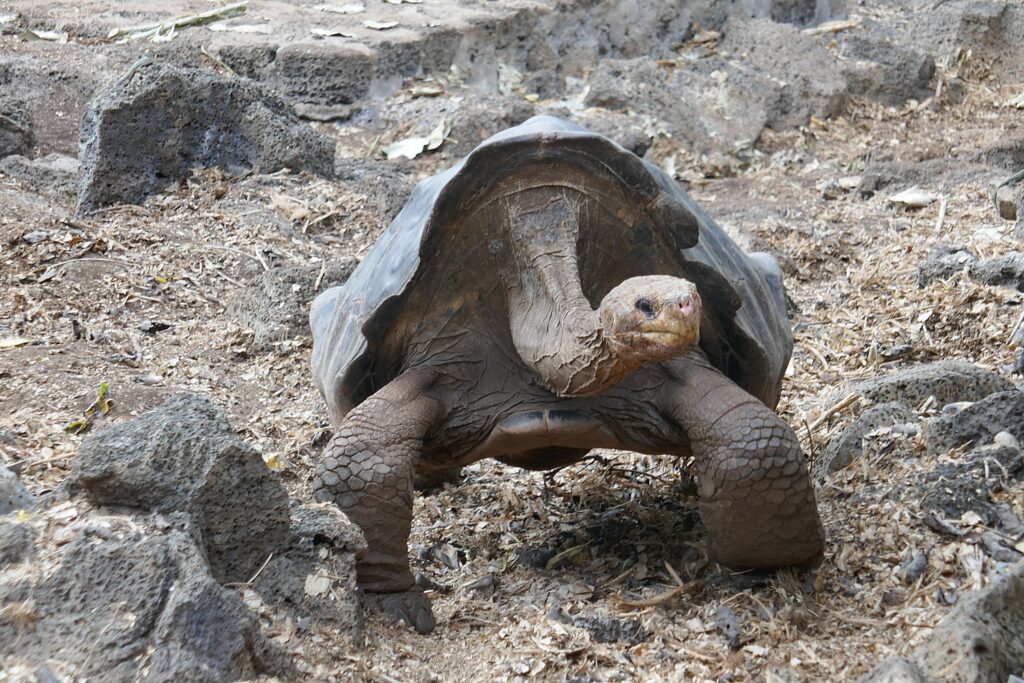
There would have been 350,000 tortoises in the 15th Century – the pirates and explorers who found their way here used tortoises and sea turtles for food and fresh water; by 1959, when the Darwin Research Center was founded, there were only 16,000 great tortoises left. The efforts of this center, and three others located in the Galapagos have resulted in the population reboundng to 50,000.
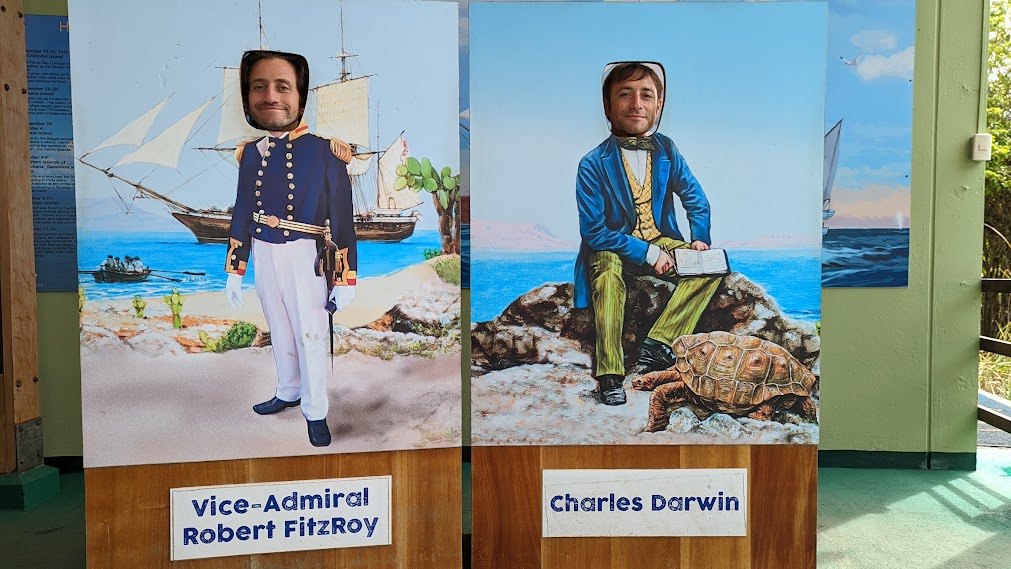
Among the fascinating facts: the conservationists impact whether a tortoise egg will hatch as male or female by controlling the incubator temperature – a higher temperature produces a female. The eggs are brought here to hatch because they would not survive in the wild due to the introduced animals – rats, cats, dogs – and are kept here for four to six years until their shells are firm enough to give them a defense against predators, and then are returned to their native island. We see their colored markings and numbers on their shells. “If left to nature, their survival rate is zero because of intruder animals,” our guide tells us. “We investigate how they live, behave, learn what tortoise need, study mortality. After, we restore the population.”
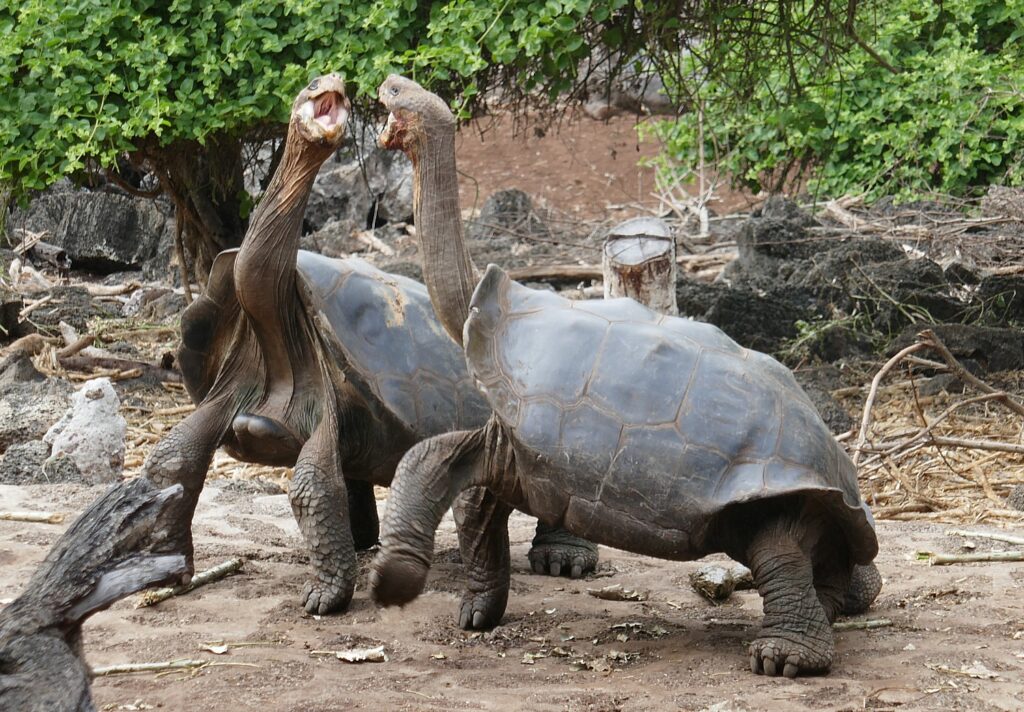
We keep hearing that the tortoises are not “social” but we keep seeing interactions. Perhaps they are changing their behavior simply by putting them together in these reserves, Karen wonders.
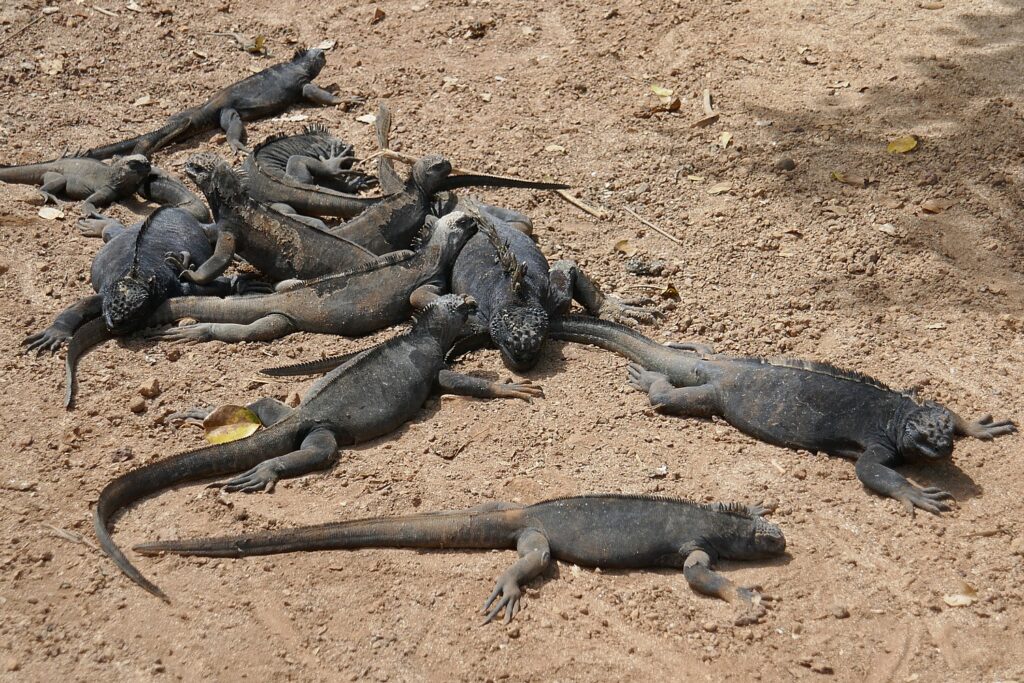
There is a sandy path that goes along the coast where we find many black marine iguanas and their babies.
Charles Darwin Research Station, Av. Charles Darwin s/n, Puerto Ayora, Galapagos, https://www.darwinfoundation.org/en/, $10 fee; allocate two hours.
We pick up some sandwiches at Galapagos Deli in town and then go off to what is easily the most wonderful day on any beach Karen has ever had, on Tortuga Bay – soft powdery white sand, the most exquisite blue-aqua-green waters, white waves, black lava rock, and a quiet cove where you get to snorkel with parrot fish and black marine iguanas (the Galapagos is the only place in the world where you see these marine iguana).
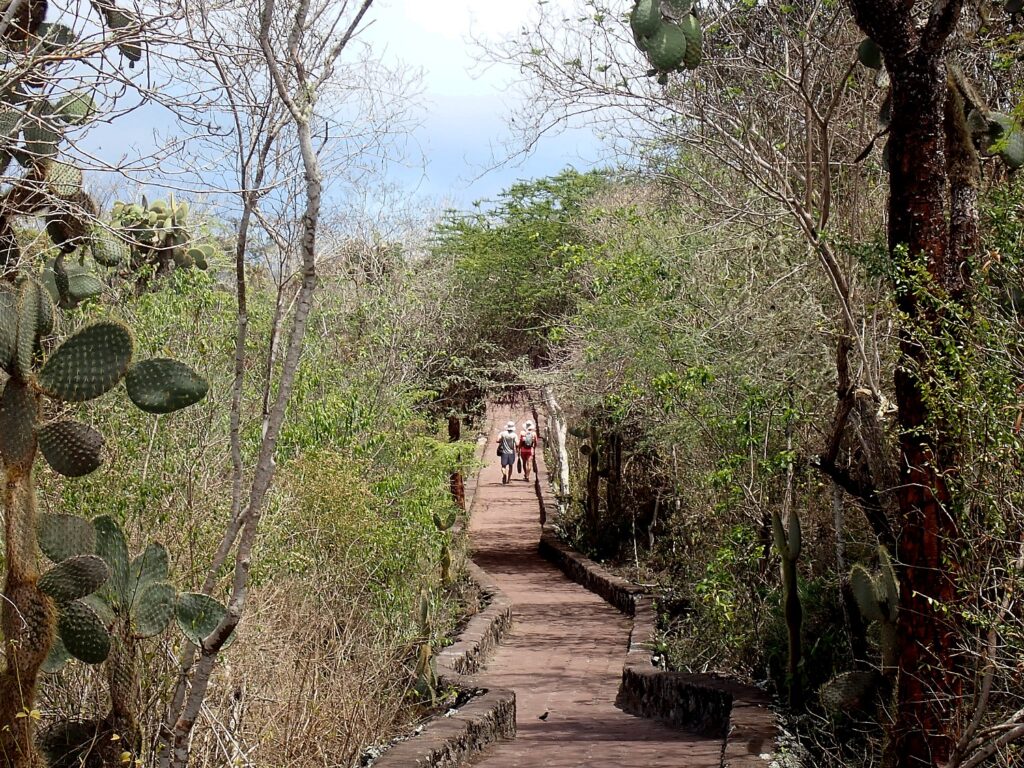
But first, we walk about 45 minutes down a mile-long paved path through a gorgeous lush forest (cactus trees!), before you get to this most stunning beach. There are actually two beaches – the long beach which is open to the ocean, has strong undercurrents and is not great for swimming.
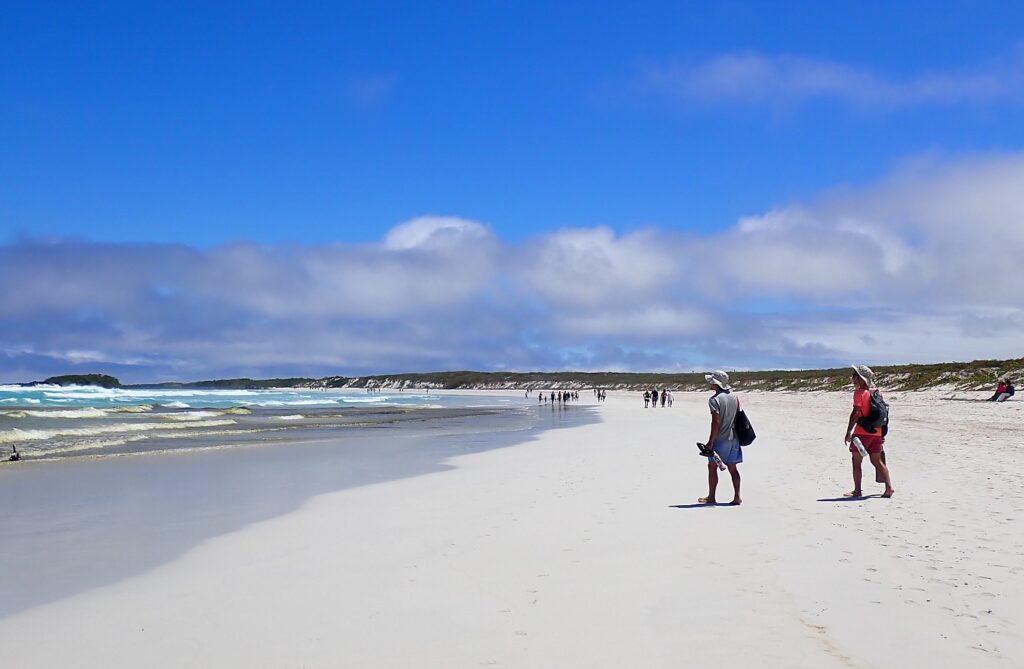
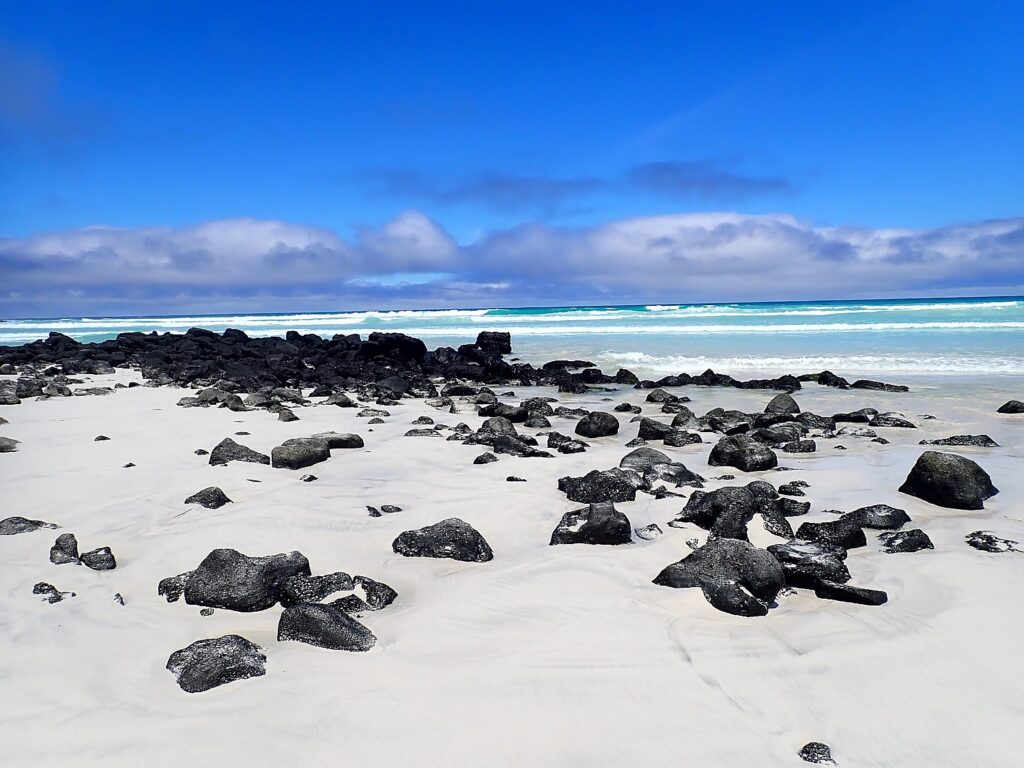
But then we come to a small cove at the end which offers superb calm waters for snorkeling and swimming with those black marine iguana as well as colorful parrot fish. Just passed this cove and around a thicket of mangrove trees we find a second beach at “Tortuga Laguna” that is more of a protected lagoon area on the bay, where the water is calm and families gather along the more narrow strip of sand.
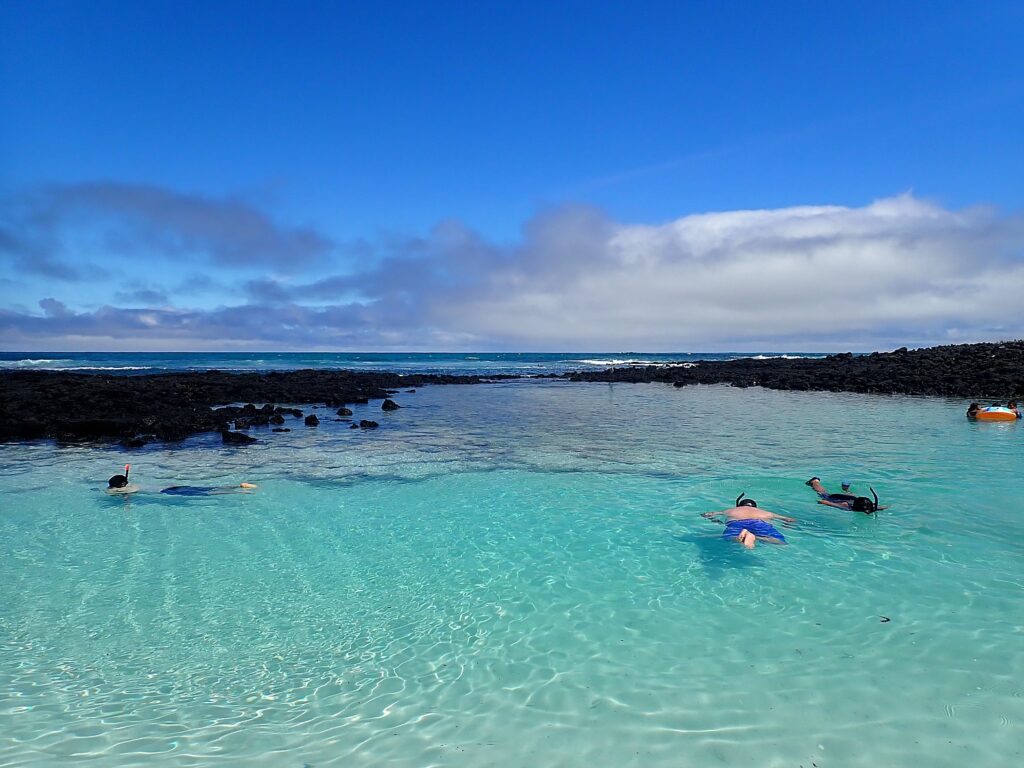
Snorkeling at the protected cove, ringed with black lava rock at Tortuga Bay, Puerto Ayora on Santa Cruz island, Galapagos © Karen Rubin/goingplacesfarandnear.com
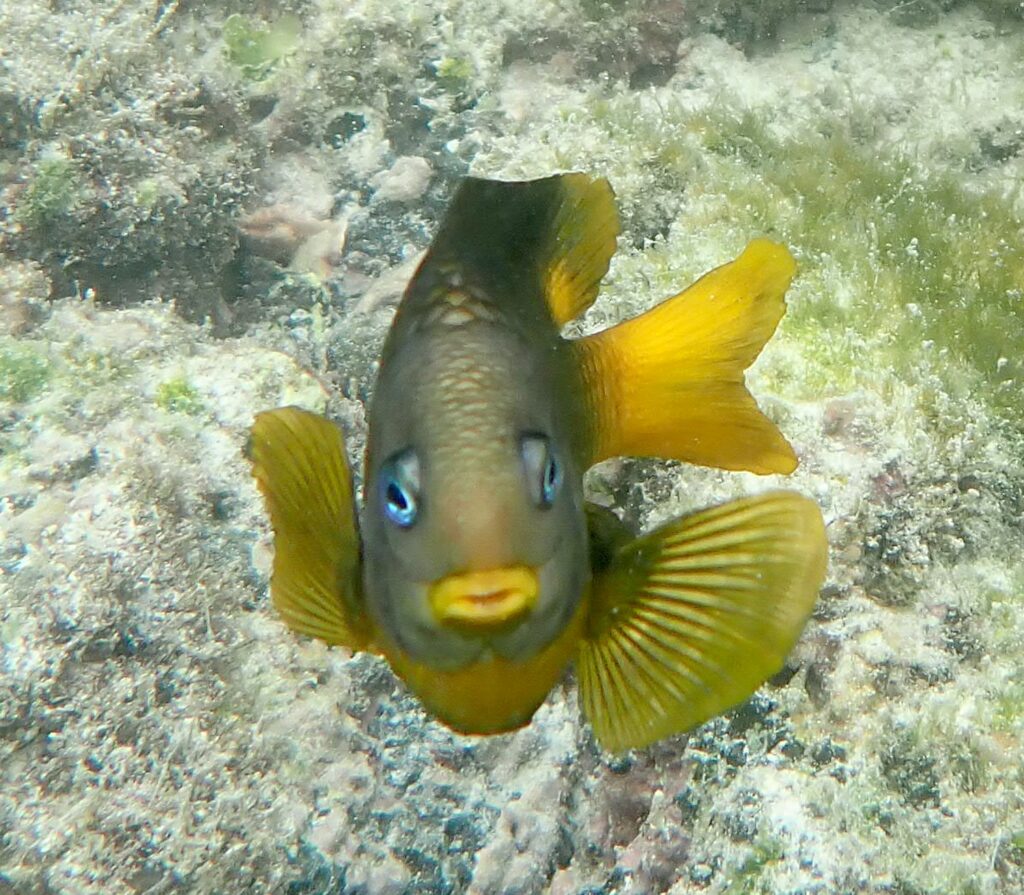

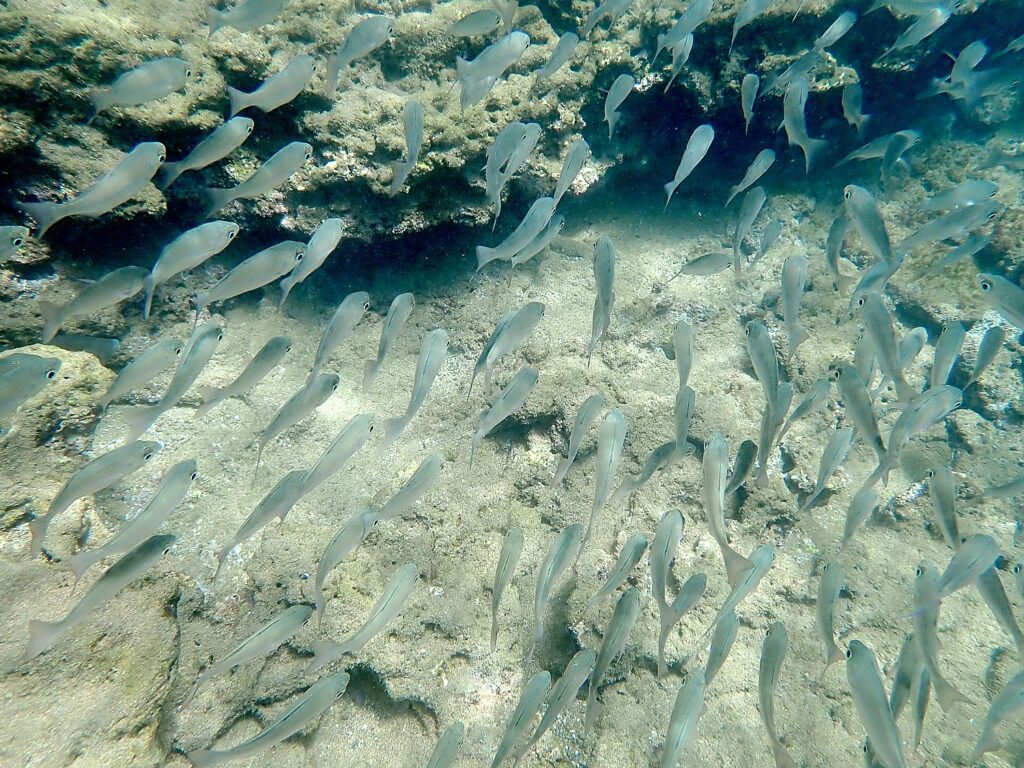
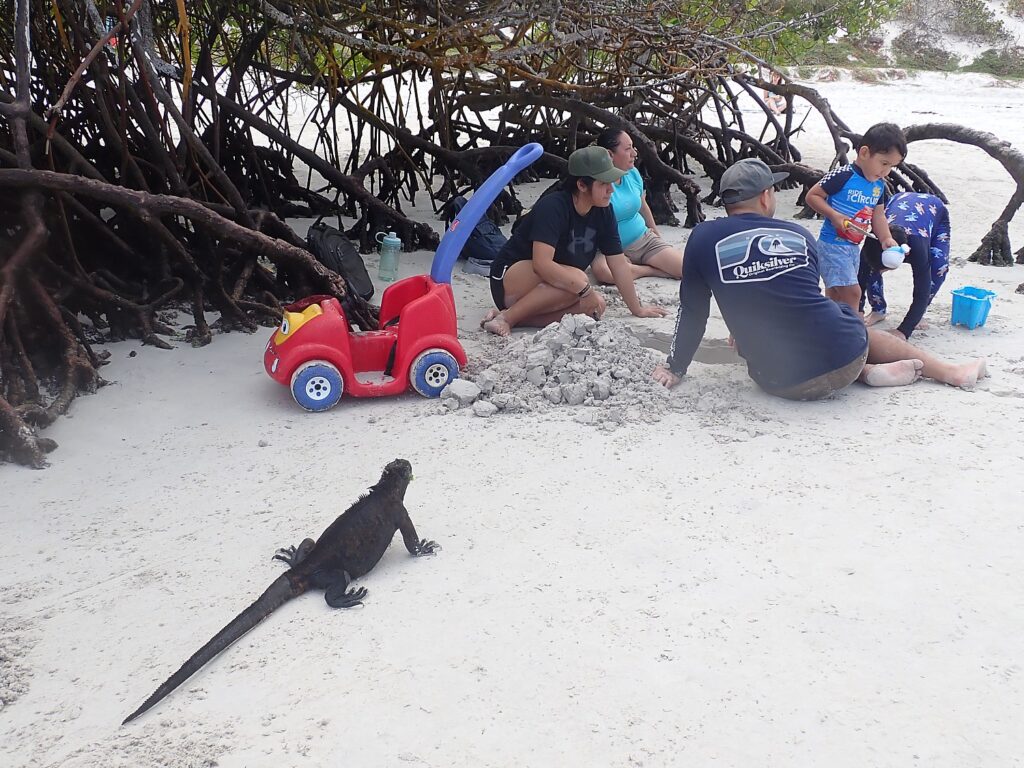

We round out this exquisite stay on Santa Cruz by arranging with our taxi driver on our way to meet our Go Galapagos cruise group at Baltra Airport to stop at the El Chato Ranch – Giant Tortoise Reserve in the Highlands (a rainforest), where we get to see where great tortoises are protectedand also get to walk through two lava tubes.(The boots they give you to wear through the mud is appreciated, $10 admission, General Rodriguez Lara 629 Puerto Ayora, Santa Cruz 200350, Ecuador, +593 98 864 4178, www.ranchoelchato.com).
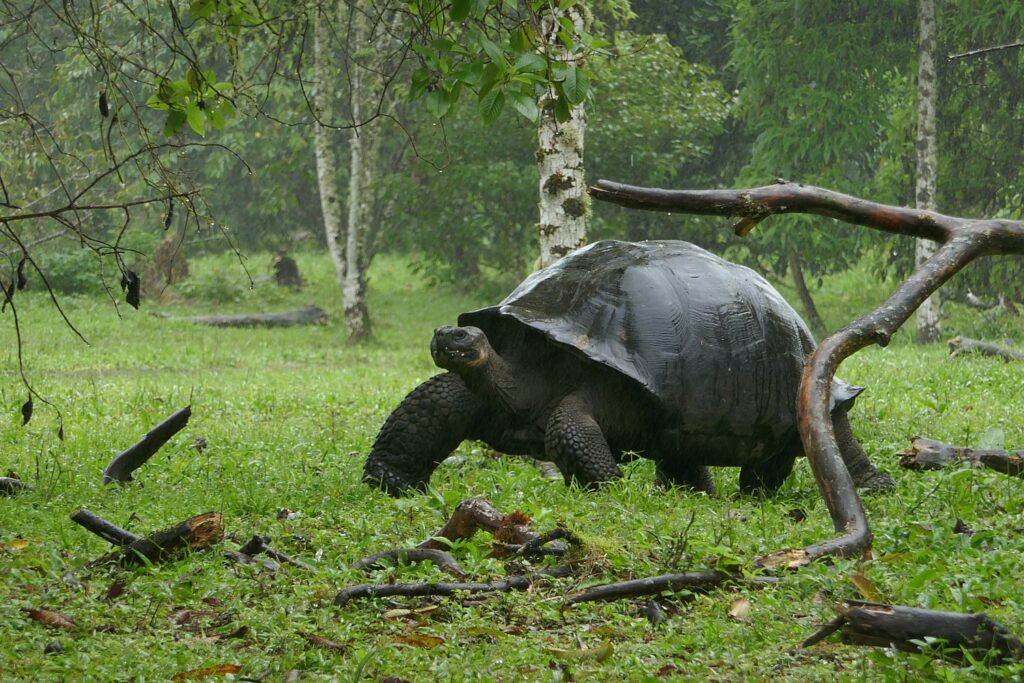

At the driver’s suggestion, we also make a quick stop at Los Gemelos (Twin Craters) – two giant pit craters which were caused by the collapse of empty magma chambers, located just off the road. If we had more time, we would have walked the trail through the Scalesia forest, which is an excellent place to spot terrestrial birds such as Vermilion Flycatchers, Short-eared Owls, the Galapagos Dove and several finch species.

Two days is really not enough time in Santa Cruz to take advantage of all it offers – you can easily spend a week. On our list for when we return:
Las Grietas (The Crevices), a strip of water through two rock formations where we hear the snorkeling is fantastic. From there the trail passes by lagoons, a beach, and the residential zone until reaching the cliffs of the main crevice. Take care climbing down into the crevices. There, you can see fresh water at the surface and the salt water of the sea at the bottom. It’s a great place to swim or snorkel. (Take a water taxi from the municipal pier to the pier of Finch Bay Hotel on the other side of the bay.)
El Mirador is a partially collapsed lava tube. Located in the arid zone, you may also get to see several of Darwin’s finches and a barn owl that lives inside the tube.
Dragon Hill, created by the Charles Darwin Foundation and the Galapagos National Park to restore the population of land iguanas that had been decimated by feral dogs, is also a wonderful place for snorkeling. Heading inland on the trail, you pass two small salt-water lagoons where you might see flamingos and other shore birds.
Playa de los Perros is a very short beach out on the western outer point of Academy Bay. The highlight is a white-tipped shark pond where you can watch sharks. It is reached by an 8-minute boat ride from the municipal pier followed by a ½ km hike on a rough trail.
Santa Cruz is ground zero for the urgency and need for sustainable tourism and development of such precious and rare places as the Galapagos. Indeed, the main point of visiting the Galapagos is that you see this process unfolding in front of you – this delicate balance between predator and prey, population numbers and the resources sufficient to sustain it, whether it is the giant tortoise, the iguana or humans. Humans have been the invasive species for centuries, not only decimating the population of sea turtles and tortoises for food and water, but introducing rats, cats, dogs and goats.

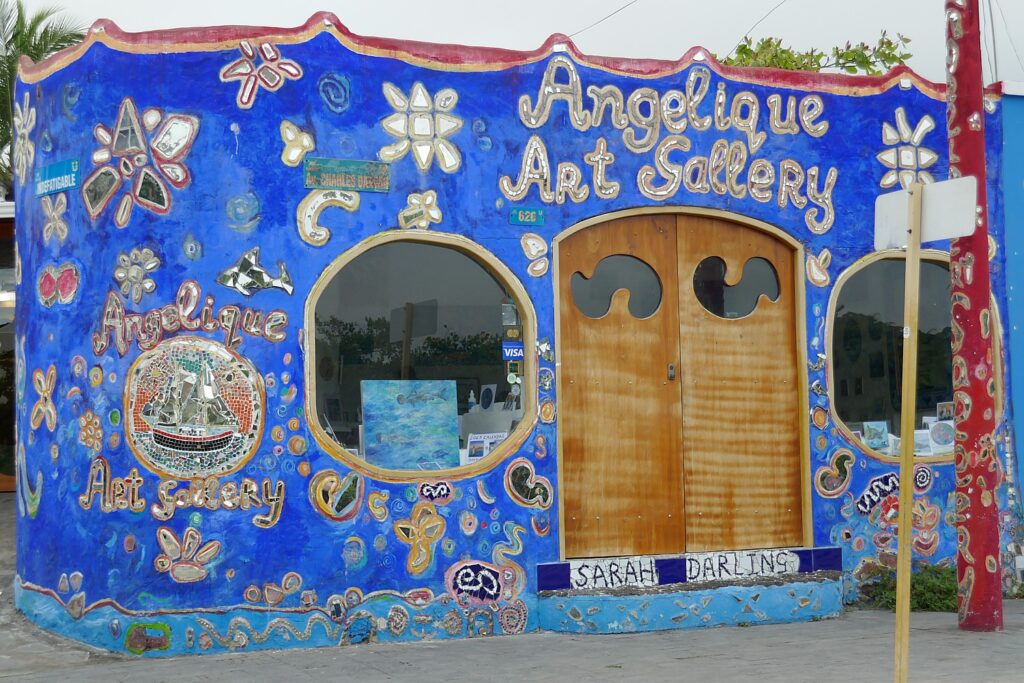
The growth of tourism has led to the growth in population in the Galapagos, putting pressure on local resources and municipalities in health, education, waste management and all the aspects of daily life, the Galapagos Conservancy notes. In effect, the Galapagos demonstrates in real time the principles of natural selection and the need to keep resources in balance. The islands are also a model in terms of adapting to these pressures – so there are strict limits on everything from owning a car to requiring the ships that bring in vital goods take away the waste that cannot be recycled (before, they just piled waste onto a dump without treatment). In 2006, the community and the national park built the “Fabricio Valverde Environmental Center” that now recycles 40% of the waste materials generated in Santa Cruz. On our walk from Tortuga Bay we also see the Galapagos Renewable Energy Center building.
Not discussed with us tourists but what must be a major concern to islanders: the impacts of human-caused climate change – stronger storms, rising sea levels. But it all adds to the urgency: see the Galapagos now.
An excellent source of information is the Galapagos Conservancy, which, since 1985, “has been the only U.S.-based nonprofit dedicated exclusively to the protection and restoration of the Galápagos Islands and its brilliant mosaic of life, including more than 2,000 species found nowhere else on Earth.” (https://www.galapagos.org/about_galapagos/the-islands/)
Some important tips: You pay $20 airport fee at Quito or Guayaquil for the flight to the Galapagos, $100 in cash to the Galapagos National Park (US dollars are used for currency in Ecuador) upon arrival. The electrical plugs are the same as we use in the US. Karen really appreciated her waterproof Olympus Tough TG-6, though an inexpensive waterproof pouch for David’s cell phone also worked well (video!).
We get to Baltra airport and meet up with the guides and fellow passengers for our cruise aboard the Galapagos Legend (www.gogalapagos.com).
See also:
CRUISING ON THE GALAPAGOS LEGEND: A VOYAGE OF WONDER
SANTA CRUZ ISLAND IS WONDER-FUL START TO GALAPAGOS ADVENTURE
CRUISING ON THE GALAPAGOS LEGEND: SAN CRISTOBAL ISLAND
__________________
© 2022 Travel Features Syndicate, a division of Workstyles, Inc. All rights reserved. Visit goingplacesfarandnear.com, www.huffingtonpost.com/author/karen-rubin, and travelwritersmagazine.com/TravelFeaturesSyndicate/. Blogging at goingplacesnearandfar.wordpress.com and moralcompasstravel.info. Visit instagram.com/going_places_far_and_near and instagram.com/bigbackpacktraveler/ Send comments or questions to FamTravLtr@aol.com. Tweet @TravelFeatures. ‘Like’ us at facebook.com/NewsPhotoFeatures
